Within this article, we lay out the parameters of Wellness Cuisine from the perspective of F&B hospitality.

Index
Jump to:
What is wellness cuisine?
Wellness cuisine is a style of cooking and eating that emphasizes the use of healthy and nourishing ingredients, as well as the mindful preparation and consumption of food. It's based on the idea that food should be more than just fuel for the body. It should also be a source of pleasure and nourishment.
Wellness cuisine incorporates a variety of ingredients that are rich in nutrients and antioxidants, such as fruits, vegetables, whole grains, nuts, seeds, herbs, seaweed, lean proteins, and healthy fats.
Wellness cuisine avoids ingredients that are high in saturated fats, processed refined sugars, preservatives, and sodium, which can contribute to various health problems. These ingredients are considered to have an 'empty calorie' content, thereby providing little to no nourishment for our bodies.
In addition to the ingredients used, wellness cuisine emphasizes how food is prepared and consumed. It encourages mindful eating practices, such as taking time to savor the flavors and textures of each bite and paying attention to hunger and fullness cues.
Overall, wellness cuisine is about using food as a tool for promoting health, vitality, and overall well-being.

Wellness cooking - 10 core values
- Honesty: With the product from nature and the guests we are preparing food for.
- Respect: For the ingredients and mother nature who produced the food.
- Integrity: Showcase and offer gratitude to the ingredients - do not waste or overcook food.
- Local: Support local growers, farmers, and businesses.
- Ethical: Acknowledge the impact of our food choices.
- Seasonal: Cook, eat and share what mother nature provides throughout the year.
- Freshness: Cook ingredients in their absolute prime to showcase them to their fullest.
- Colorful: Eat the rainbow.
- Nutritionally balanced: Provide nutrition required by the human body to thrive.
- Mindfulness: Prepare, cook, and serve food mindfully and with love.

Cooking techniques
Cooking is a great way to add flavor to food and boost its nutritional content. Beware, cooking can also make food very unhealthy! It all depends on 'how' food is prepared and cooked.
The way in which foods are prepared, cooked, and served will have a direct impact on the person's overall health and well-being.
Below is a list of healthier food preparation and cooking techniques that will help boost the flavor and nutritional content of the ingredients.
Healthy cooking techniques:
- Steaming: This method involves cooking food in steam, which helps to retain nutrients and flavors without adding extra fats or oils. Herbs and seaweed can be added to the water for extra flavor.
- Poaching: Poaching involves cooking food in a liquid such as water, broth, or wine. This method can help to keep foods moist and tender, while also adding flavor without adding extra fats or oils.
- Grilling: Grilling is a healthy cooking method that involves cooking food over an open flame or on a grill pan. This technique can help to reduce the amount of fat and add a smoky flavor to vegetables.
- Roasting: Roasting involves cooking food in the oven at high heat, which can help to bring out the natural flavors of vegetables and meats. This method can also be used to create crispy textures without adding extra oil.
- Broiling: Broiling is a cooking method that involves cooking food under high heat in the oven. This technique can help to create a crispy exterior without adding extra fats or oils.
- Stir-frying: Stir-frying is a quick and healthy cooking method that involves cooking food in a small amount of oil over high heat. This technique can help to retain the nutrients and flavors of vegetables and proteins.
- Air frying: Cooking in an air fryer is a good way to roast certain items without any added oil.
- Baking: Baking involves cooking food in the oven, which can help to create a crispy outer layer while retaining moisture on the inside. This technique can be used for a variety of foods, including vegetables, bread, and desserts.
- Sous vide: Sous vide involves cooking food in a vacuum-sealed bag in a water bath. This technique can help to retain the natural flavors and textures of foods, while also reducing the need for added fats or oils.
Other cooking techniques can be used in moderation:
- BBQ / Shallow frying in clean oil / Confit in good oils

Raw food techniques
Raw fruits, vegetables, herbs, sprouts, krauts, and flowers contain living enzymes. When cooking certain ingredients, we kill many of the live enzymes and lose their life force energy.
A raw julienned carrot will have a completely different nutritional profile than a carrot that is cooked for 1 hour in a stew. Both are nutritious but in different ways.
Adding a variety of 'Raw Food' recipes to your menus and meal plans will provide a good balance of overall nutrients.
Healthy raw food techniques
- Soaking and Sprouting: Soaking and sprouting seeds, nuts, and grains can help to unlock their nutrients and make them more digestible. Soaked and sprouted foods can be used in a variety of recipes, including salads, smoothies, and soups.
- Slow-Pressed Juicing: Juicing involves extracting juice from fruits and vegetables, which can be a quick and easy way to incorporate a variety of nutrients into your diet.
- Fermenting: Fermenting involves using bacteria and yeast to break down foods and create probiotics. Fermented foods such as kimchi, sauerkraut, and kefir can help to improve digestion and boost the immune system.
- Dehydrating: Dehydrating involves removing the water from foods at a low temperature, which can help to preserve their nutrients and flavors.
- Blending: Blending can be used to create a variety of raw food recipes, including smoothies, soups, and sauces. This method can help to retain the nutrients and flavors of the ingredients, while also making them more digestible.
- Spiralizing: Spiralizing involves using a spiralizer tool to turn vegetables into noodles, which can be used in a variety of raw food recipes. Spiralized vegetables such as zucchini, sweet potatoes, and beets can be a healthy and nutritious alternative to traditional pasta.
- Pickling: Pickling involves soaking fruits, vegetables, and other foods in vinegar, salt, and spices to preserve them and add flavor. Pickled foods such as cucumbers, beets, and carrots can be a healthy and flavorful addition to salads and sandwiches.
- Extracting: Using a seed oils extracting machine is a great way to make cold-pressed seed and nut oils which contain an incredible amount of nutrition.
- Marinating: Marinating is a simple technique that adds more flavor to foods. Coating various fruits, vegetables, mushrooms, and cooked grains with herbs and spices is a great way to boost the flavor of otherwise bland foods.
Raw Food preparation techniques are a great addition to your regular wellness kitchen practices. Raw foods are nutrient-dense, nourishing, flavorful, colorful, vibrant, and all-round delicious.
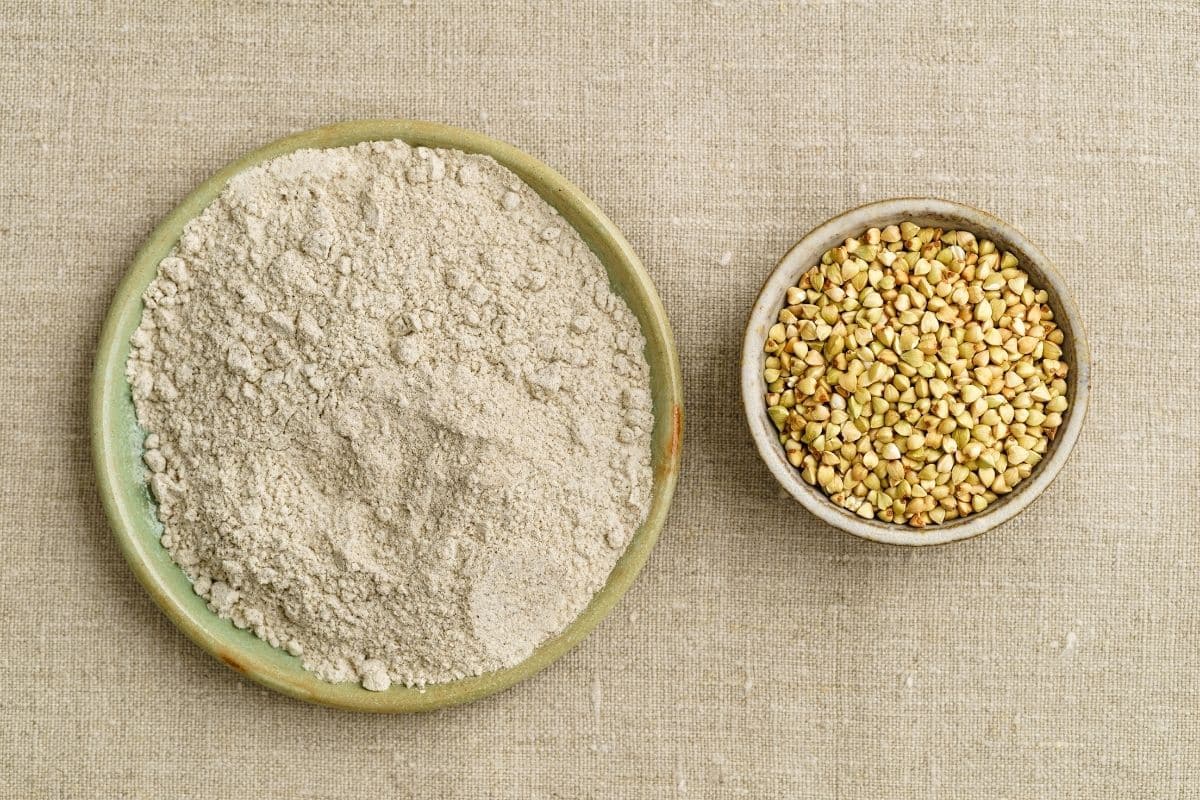
Wellness ingredients
There are over 70000 edible plants on earth - eating plant-based is in no way limiting! It's an abundant way of cooking and eating. It just takes a renewed perspective.
Generally, in Wellness Cuisine we celebrate and showcase wholefood plant-based ingredients. Everyone has different nutritional needs depending on their health situation and cultural background.
Good quality animal-based food products such as meat, fish, dairy, and eggs can be incorporated into individuals' meal programs according to their individual dietary needs.
Below is a breakdown of the food groups of Wellness Cuisine
- Fruits
- Vegetables
- Fungi
- Grains
- Pulses
- Beans
- Nuts
- Seeds
- Herbs
- Flowers
- Spices
- Seaweeds
- Dairy - in moderation
- Meat - in moderation
- Fish - in moderation
- Eggs - in moderation
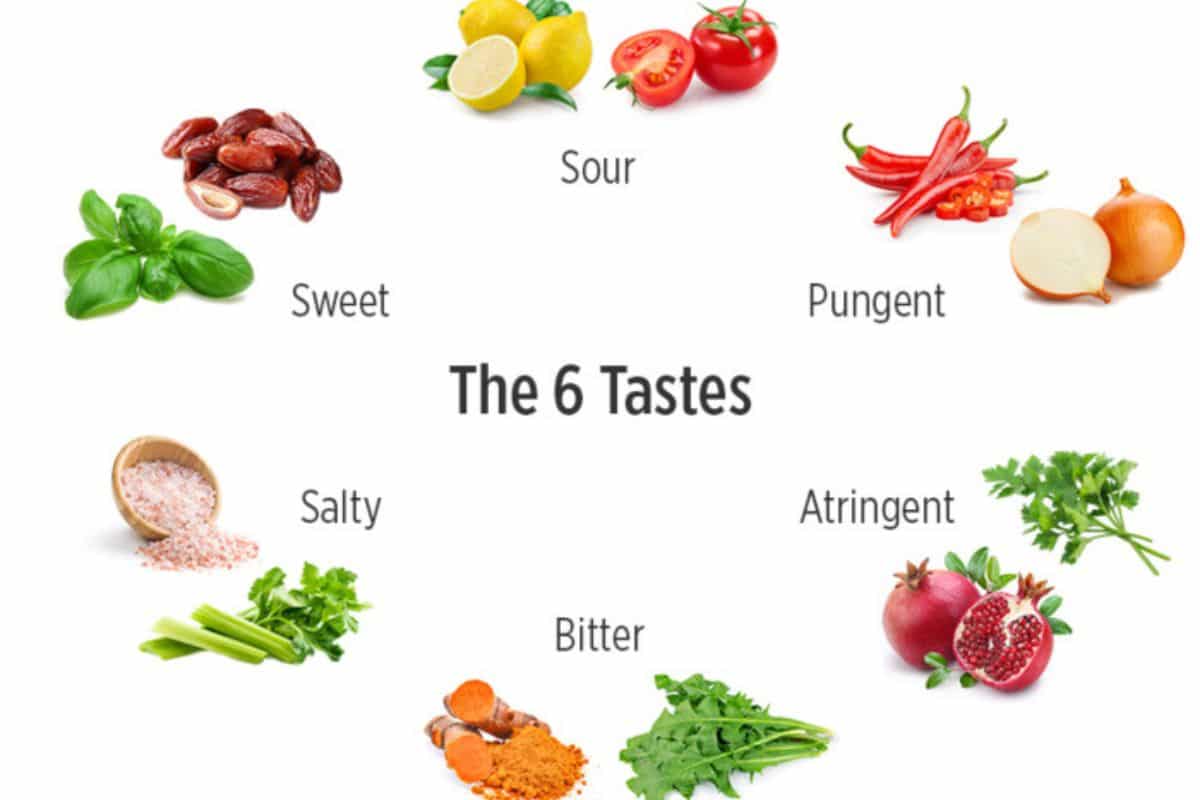
Wellness food balance
The food we consume makes us feel a certain way. Food either boosts our energy or depletes our energy.
- Good Food = Good Mood
- Bad Food = Bad Mood
Eating is a sensory experience that engages our taste, sight, smell, hearing, and feelings. Of course, we need to be mindful and aware when eating to truly appreciate the ritual.
For food to provide positive energy and taste good it must be balanced.
- Taste: Food must taste fresh and delicious.
- Sight: Food must look colorful and appetizing.
- Smell: Food must smell pleasant and tempting.
- Sound: Food must be presented in a positive way and the ambiance should be relaxing.
- Feel: The texture and temperature of food must be balanced and enjoyable to eat.
Ayurveda identifies six basic tastes: sweet, sour, salty, spicy, bitter, and astringent - that influence health and balance. Each taste is associated with specific qualities and affects digestion and overall health. The balance of these tastes is important for maintaining overall health and well-being.
- Sweet foods promote strength, energy, and healthy body tissue, while excessive consumption can lead to weight gain and sluggishness.
- Sour foods stimulate digestion, bile flow, and appetite, but excessive consumption can lead to acidity and inflammation.
- Salty foods promote hydration and electrolyte balance, but excessive consumption can lead to high blood pressure and water retention.
- Spicy foods stimulate digestion and improve metabolism. Not too much spice, it must be balanced!
- Bitter foods detoxify, promote healthy skin, and stimulate digestion, while excessive consumption can lead to dryness and coldness.
- Astringent foods promote circulation, clear congestion, and stimulate digestion, while excessive consumption can lead to irritability and inflammation.
Balancing these tastes within a recipe is a way to provide nourishment and sensory pleasure for guests.
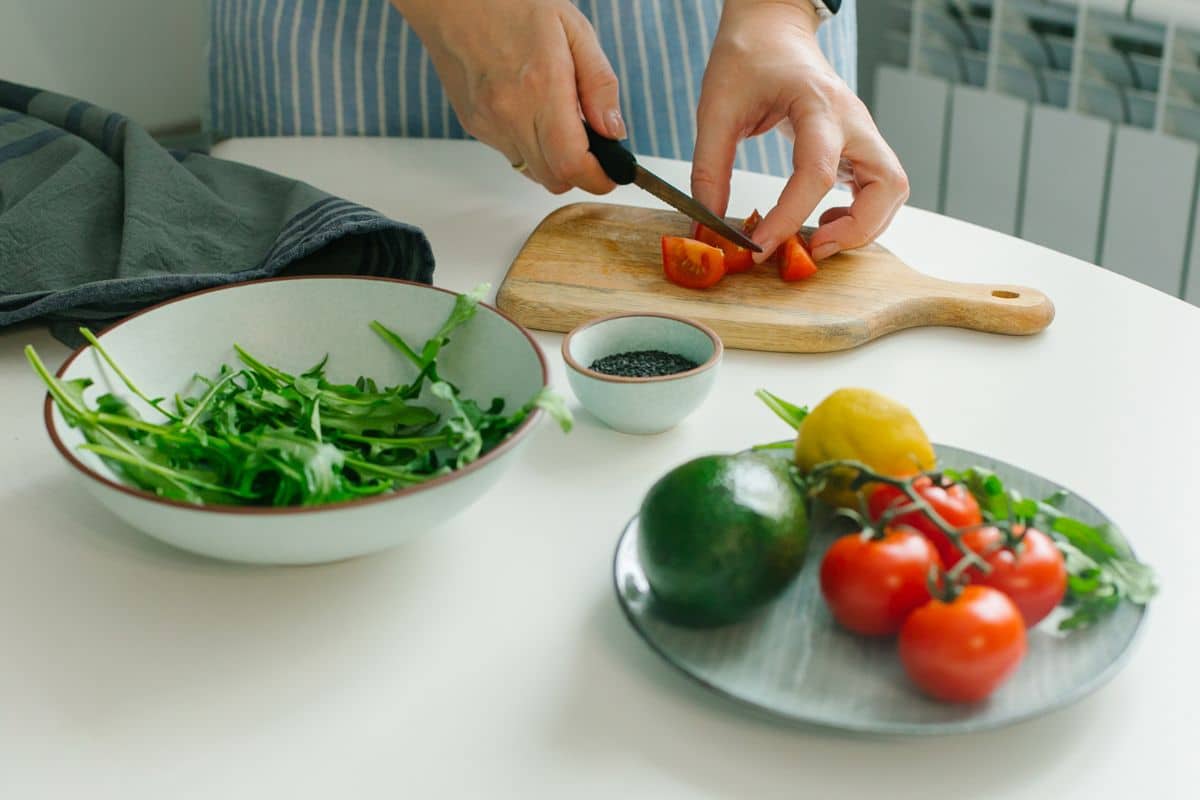
Creating a wellness recipe
When planning to create a wellness recipe, there are a few key steps to consider.
- Firstly, define your goal, whether it's promoting energy, boosting immunity, or supporting a specific aspect of well-being.
- Research nutritious ingredients that align with your goals, such as nutrient-dense vegetables, plant proteins, whole grains, and healthy fats.
- Consider incorporating superfoods or herbs known for their health benefits.
- Once you have a list of ingredients, create a balanced recipe that includes a variety of flavors, textures, and colors.
- Aim for a combination of macronutrients (carbohydrates, proteins, and fats) and micronutrients (vitamins and minerals).
- Keep portion sizes in mind for a well-rounded meal.
- Experiment with cooking methods and techniques to maximize nutrient retention and enhance flavors.
- Don't be afraid to adjust and fine-tune your recipe as needed.
Enjoy the process, and don't be afraid to make mistakes!
Include in abundance for wellness recipes
- Wholefoods in their original form
- Fruits and berries
- Vegetables, tubers, and potatoes
- Salads, sprouts, and greens
- Grains
- Pulses
- Fungi - mushrooms
- Nuts
- Seeds
- Seaweeds
- Herbs
- Spices
- Wholegrain flours (millet, lentil, buckwheat, quinoa, amaranth, etc)
- Fermented foods (tempeh, kimchi, sauerkraut etc)
Ingredients to reduce for wellness recipes
Wellness cuisine is about practicing moderation while reducing the consumption of inflammatory animal products and processed foods. The following ingredients are recommended to be greatly reduced or avoided within wellness recipes.
- Sugar; use natural sugars like maple syrup, coconut syrup, honey, rice syrup, malted barley
- Gluten: (wheat, spelt, barley, rye)
- Meat
- Fish
- Eggs
- Dairy; milk, butter, cream
- Soy sauce - use low sodium seasonings
- Processed and tinned foods
Ingredients to exclude in wellness recipes
- Mono Sodium Glutamate (MSG)
- Refined corn, palm, canola, or other processed vegetable oil
- Processed meats
- Artificial flavorings and chemicals
A wellness recipe must be
- Freshly cooked - not frozen or microwaved.
- Seasonal and as organic as possible.
- Portioned controlled; to avoid overeating and taxing the digestion
- Nutritionally balanced.
Generally, wellness recipes are:
- Meat-free
- Fish-free
- Egg-free
- Dairy-free
- Mostly gluten-free
- Low or no added sugar
Wellness ingredient substitutions
- Eggs - Chia Egg / Flax Seed Egg: Ground chia or flax seed mixed with water (1:2 ratio) / Chickpea flour
- Meat - Jackfruit - Tofu - Tempeh - Seitan - Chickpeas - Lentils - Soy Meat
- Fish - Seaweed - Jackfruit - Tofu - Tempeh - Seitan
- Cream - Coconut Cream - Cashew Cream - Soy Cream
- Milk - Plant Milk; Cashew - Almond - Pistachio - Walnut - Hazelnut - Oat - Rice - Soy
- Butter - Make Vegan Butter
- Cheese - Make Vegan Cheese
- White Flour - Quinoa, millet, wholegrain, oat, buckwheat, teff, amaranth flour
- White Sugar - Jaggery, brown sugar, rapadura sugar, coconut sugar
- Sugar Liquid Syrup - Honey, maple, rice syrup, barley syrup, coconut syrup, good quality brown palm sugar
- White Table Salt - Pink salt, sea salt, black salt



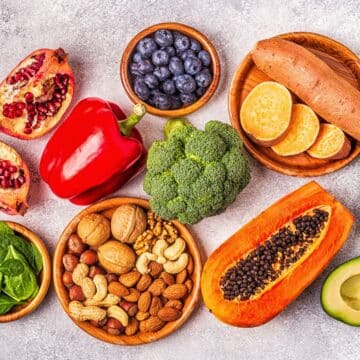
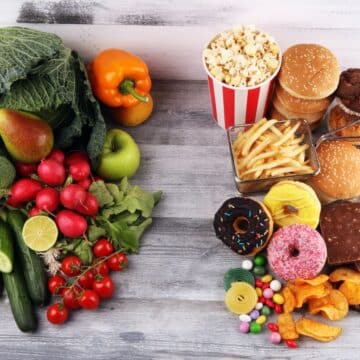
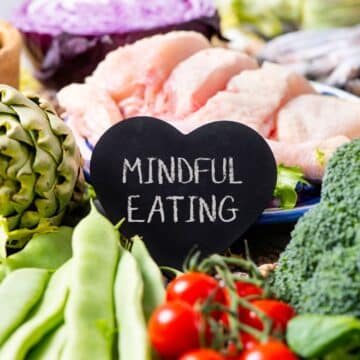
Did you make this recipe? Let me know!